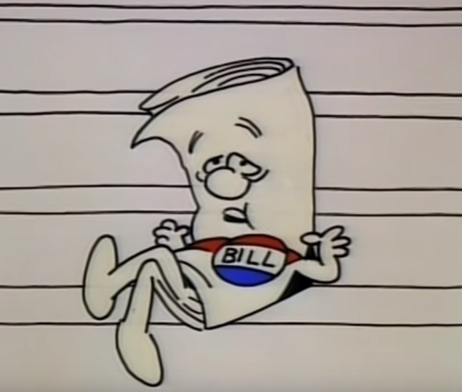
As the weeks, webinars, conferences, and workshops click by, I contemplate the barriers to decarbonization policy. Next week in our decarbonization course through AESP (register while there is still time) we will discuss policy on the state and regional levels. This post describes federal policy.
 This next chapter of the discussion comes via the EE Global Forum, an online conference presented by the Alliance to Save Energy last week. That provided more fertile soil to consider issues and barriers with decarbonization policy. The Alliance is rooted in the Washington area and is committed to efficiency at the national level.
This next chapter of the discussion comes via the EE Global Forum, an online conference presented by the Alliance to Save Energy last week. That provided more fertile soil to consider issues and barriers with decarbonization policy. The Alliance is rooted in the Washington area and is committed to efficiency at the national level.
The question du jour for this post is: why isn’t everyone on board with decarb and the climate change threat?
Be Respectful, Empathetic, and Pleasant
As for people in flyover country, we can begin with Ronald Reagan’s scariest ten words in the English language: “I’m from the government and I am here to help.”
Millions of people in flyover country observe the chaotic dysfunction and juvenile behavior in Washington DC and think, “Oh yeah, I want some of that. Please control me!”
Moving on with a chatbox question from one of the attendees of EE Global, he wrote:
How and when can Republicans publicly oppose the climate change denying position of President Trump?
Translation: How do we get the fools on board? Answer: Not that way. The term denier is a destructive and hostile way to end any conversation in one word. It invokes a response that is not fit for this blog.
Carlos Curbelo, R, former Representative from South Florida and a panelist EE Global, said Republicans are on board with the climate agenda, but it is simply not a priority. He used the word “apathetic” to describe their perspective on this issue. In my opinion, which is correct, it’s a matter of priorities on both sides.
The Old Way of Sausage Making
But let’s step back and examine how politics work in DC – the root of the problem. I learned a lot about civics from the Schoolhouse Rock series that aired around my favorite toons on Saturday mornings in the 1970s – Looney Toons and Scooby-Doo. Back then, the legislative branch wrote laws, the executive branch enforced the laws, and the judicial branch interpreted and adjudicated the laws.

Source: https://www.youtube.com/watch?v=FFroMQlKiag
New and Worse Sausage Making
That’s not the way it works anymore. Congress passes spending bills and CRs (continuing resolutions), but they write almost no laws. Instead, the executive writes a bunch of executive orders (EOs), which are laws, and the opposition is left to battle it out in the court system until, in many cases, it gets to the Supreme Court. I posted a perfect example of how this works in February 2016, Clean Power Plan (CPP) – the Coma Phase. Before the CPP, the EPA (administration) put strict and rather absurd limits on mercury emissions as part of the “mercury and air toxins standards or MATS.” By the time the rule (law) had ground through the courts, and the SCOTUS voided it, utilities had spent the money to comply.
The second act was Obama’s Clean Power Plan to limit CO2 emissions. Based on lessons learned via the MATS fiasco, the SCOTUS issued a stay on the CPP. The SCOTUS wanted to avoid the MATS scenario that resulted in spending many millions of dollars on a rule that would be voided.
The upshot: Had congress passed revisions to the Clean Air Act to accommodate these things, they would be the law of the land.
Very briefly, Washington works like this:
- Innaugural swearing in ceremonies at noon, January 20.
- Hours later, sign a few dozen executive orders (EOs, aka laws) to undo the last president’s EOs (laws).
- In the next couple of months, sign more EOs to skirt Congress and stick it to the other party.
- The EOs grind their way through the courts.
- If, and when, a supreme court seat opens, nominate a judge who will be approved or rejected by the Senate along party lines.
- Next president: wash, rinse, repeat.
That’s how it works today, Mr. Bill from Schoolhouse Rock. The three branches of government are the POTUS, SCOTUS, and the Senate, which accepts or rejects court nominations. One result is the SCOTUS wields too much power.
The party of the White House loves the EO power, but it all reverses when the other party takes it back. Do you see what I mean by juvenile? Another casualty of juvenility is ditching the filibuster in the Senate. The filibuster essentially requires 60 votes to pass anything in the Senate. Eliminating the filibuster has made Washington more cynical, divisive, and dysfunctional because it eliminates the need for negotiation and bipartisanship. Remember, what goes around, comes around.
You Get What You Prioritize
Circling back to Representative Curbelo’s statement about apathy on climate change policy: every administration starts with a certain amount of political capital to spend. It’s just like money. If they burn that capital by sticking it to other side, especially on things that are not that important to the agenda like pipelines and border walls, and spend the rest on something else, then meaningful, sweeping, lasting climate policy isn’t going to make it. Any law or policy approved along party lines will be undone when the pendulum swings the other way as it always does. You have to play the long game and avoid the seven deadly sins (especially greed, lust, and wrath) to win.





